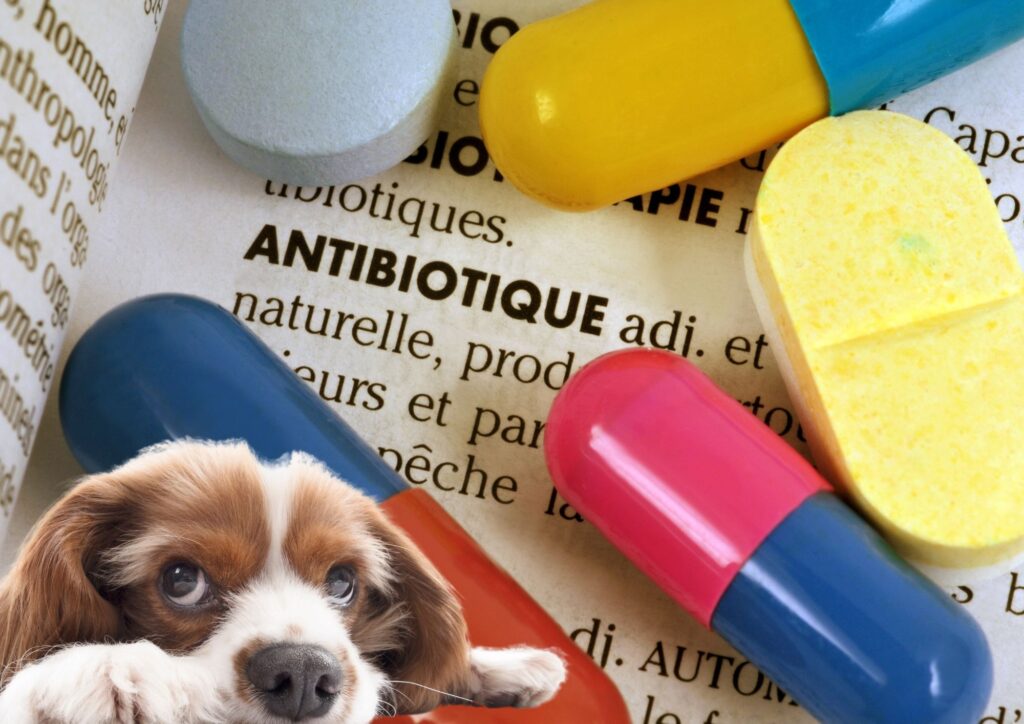Introduction:
Antibiotic for dogs have revolutionized veterinary medicine, and numerous dog lives have been saved. Bacterial infections, wounds, and post-surgical complications – antibiotics are an indispensable component of keeping your dog healthy. However, it is crucial to use them correctly to avoid side effects and resistance. In this blog, we will ask you people seven miracle antibiotics for dogs that have been known to save lives, what they are utilized for, and how to safely use them.
What are antibiotics?
Antibiotics are powerful medications that fight bacterial infections by killing bacteria or stopping their growth, enabling your dog’s immune system to recover more easily. They do not work against viruses, fungi, or parasites. Veterinarians prescribe antibiotics to treat a variety of bacterial infections in dogs. Antibiotics either kill bacteria directly (bactericidal) or stop the growth of bacteria (bacteriostatic), allowing the dog’s immune system time to destroy the infection.

How Do They Work?
Different antibiotics work in different ways. Some of the common mechanisms of action include:
Inhibiting cell wall synthesis: Penicillins and cephalosporins prevent bacteria from synthesizing their protective outer layer, which leads to the death of bacterial cells.
Inhibiting protein synthesis: Macrolides and tetracycline inhibit bacteria from producing essential proteins, preventing their growth.
Interfering with DNA replication: Fluoroquinolones damage bacterial DNA, making bacteria unable to reproduce.
Interfering with metabolic processes: sulfonamides block essential bacterial enzymes, inhibiting bacterial growth.
Types of Antibiotics Used in Veterinary Practice:
Penicillins (e.g., Amoxicillin) – Effective against a wide range of infections.
Cephalosporins (i.e., Cephalexin) – Useful for skin and urinary tract infections.
Lincosamides (e.g., Clindamycin) – Used to treat bone and dental infections.
Nitroimidazoles (e.g., Metronidazole) – Effective against anaerobic infections and GI issues.
Tetracycline (e.g., Doxycycline) – For tick-borne diseases.
Fluoroquinolones (e.g., Enrofloxacin) – Broad-spectrum antibiotic for severe infections.
Sulfonamides (e.g., Trimethoprim-Sulfamethoxazole) – Used for respiratory and urinary infections.
7 Life-Saving Antibiotic for Dogs
1. Amoxicillin
Generic name:
Amoxicillin
Mechanism of action:
Inhibits bacterial cell wall synthesis.
Route of administration:
Oral tablets, liquid suspension, or Injection.
Dosage:
Typically 5-10 mg per pound of body weight every 12 hours.
Indications:
- Respiratory infections
- skin infections
- urinary tract infections.
Contraindications:
- Allergy to penicillin
- severe kidney disease.
Side effects:
- Diarrhea
- Vomiting
- Allergic reactions.
- Drug interactions: May interact with other antibiotics and anticoagulants.
2. Cephalexin:
Generic name:
Cephalexin
Mechanism of action:
Inhibits bacterial cell wall synthesis.
Route of administration:
Liquid oral suspension or capsules.
Dosage:
10-15 mg per pound every 8–12 hours.
Indications:
Skin infections, bone infections, urinary tract infections.
Contraindications:
Hypersensitivity to cephalosporins or penicillins, known.
Side effects of Antibbotic for dogs:
- Nausea
- diarrhea
- potential allergic reactions.
- Drug interactions: Avoid concomitant use with nephrotoxic agents.
3. Clindamycin:
Generic name:
Clindamycin
Mechanism of action:
Inhibits bacterial protein synthesis.
Route of administration:
Oral capsules or liquid suspension.
Dosage:
5-10 mg per pound every 12 hours.
Indications:
Infections of dental, bone, soft tissue.
Contraindications:
- Liver disease
- kidney disease.
Side effects:
- Vomiting, diarrhea
- loss of appetite.
- Drug interactions: May interact with neuromuscular blocking agents.
- (And similarly for the rest of the antibiotics.)
How to Administer Antibiotics to Your Dog Safely:
Always adhere to the veterinarian’s prescription.
Take the medication with food if instructed.
Make sure to finish the entire antibiotic cycle, although the symptoms of your dog improve earlier.
Watch for side effects and call your vet if they occur.
Risks and Side Effects of Antibiotics in Dogs:
Common side effects: Nausea, vomiting, diarrhea.
Severe reactions: Allergic reactions, difficulty breathing.
Long-term risks: Antibiotic resistance with inappropriate use.
Preventing Antibiotic Resistance in Dogs
Prevent excessive consumption of antibiotics.
Always complete the prescribed course.
Adhere to veterinary advice regarding dosages and treatment durations.
Natural Alternatives to Antibiotics for Dogs:
Herbal remedies: Echinacea, oregano oil.
Probiotics enhance gut health and immune system function.
Manuka honey: Natural antimicrobial properties.
Conclusion: The Antibiotic Power to Save Dogs’ Lives:
The choice of the correct antibiotic for dogs is essential in keeping your pet healthy. In treating infections, wounds, or diseases in the respiratory system, the right antibiotic for dogs can be a lifesaver. Consult a veterinarian first before giving any antibiotic to dogs to receive the right dosage and outcome.
A properly prescribed antibiotic will prevent complications and speed healing. From ear infections to skin infections, the application of an appropriate antibiotic in dogs is called for. Getting your pet to complete a course of an antibiotic for dogs will prevent the development of resistance and help to heal.
With the right antibiotic for dogs, your pet will be able to recover from harmful bacteria and be healthy again. If your pet is showing signs of infection, seeking advice from a veterinarian and taking the right antibiotic for dogs is necessary. Taking their health seriously with the best antibiotic for dogs will give them an active and happy life.
FAQs:
1. Can I give human antibiotics to my dog?
No, provide only antibiotics prescribed by your veterinarian.
2. How long do antibiotics take to start working in dogs?
The majority of antibiotics work within 24–48 hours.
3. Do antibiotics cause diarrhea in dogs?
Yes, some antibiotics disrupt gut flora and cause diarrhea.
4.What’s the best method for handling a missed dose of my dog’s antibiotic?
Take the missed dose as soon as you remember, unless it is close to the time for the next dose. 5. How do I know if my dog needs antibiotics? Only a veterinarian can diagnose bacterial infections and determine if antibiotics are necessary. Don’t forget to leave a review, please.



Pingback: Nitrofurantoin for Dogs :10 Shocking Facts You Must Know!